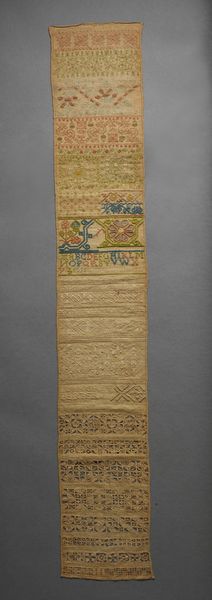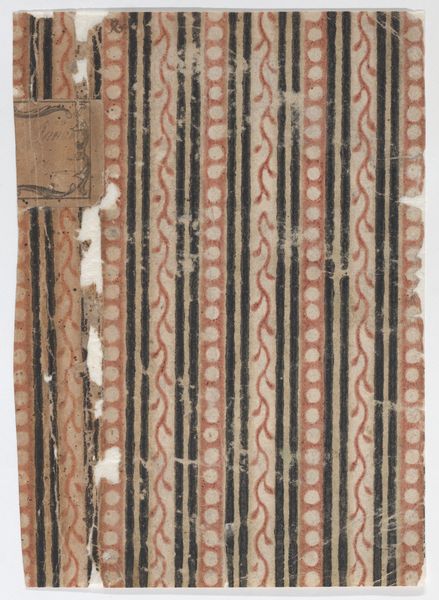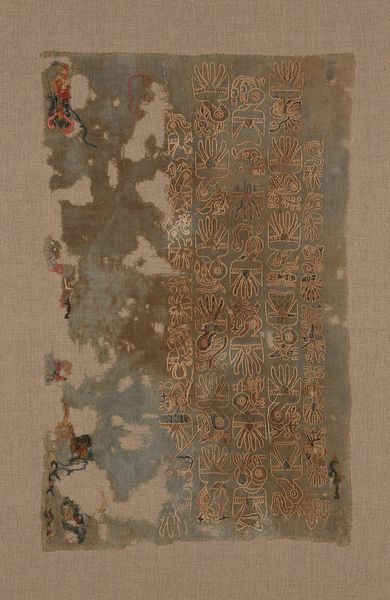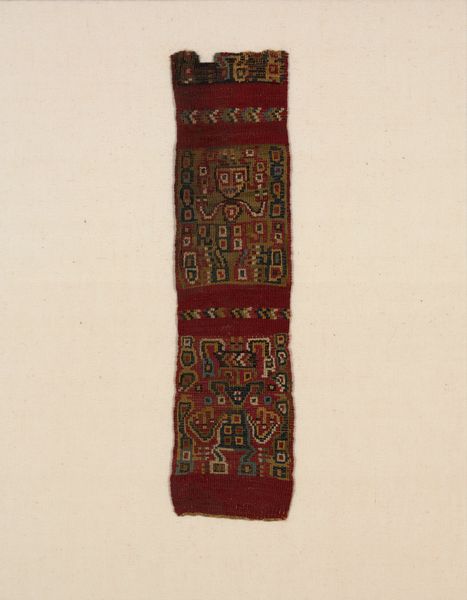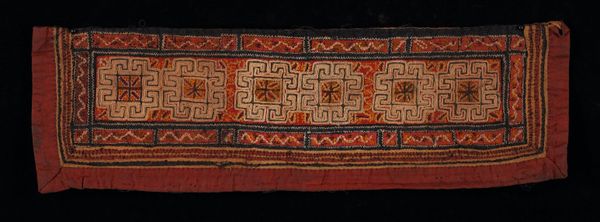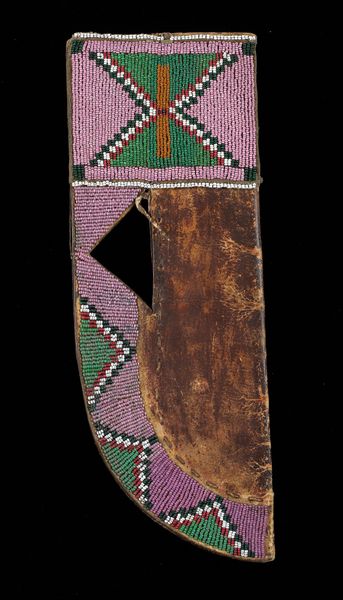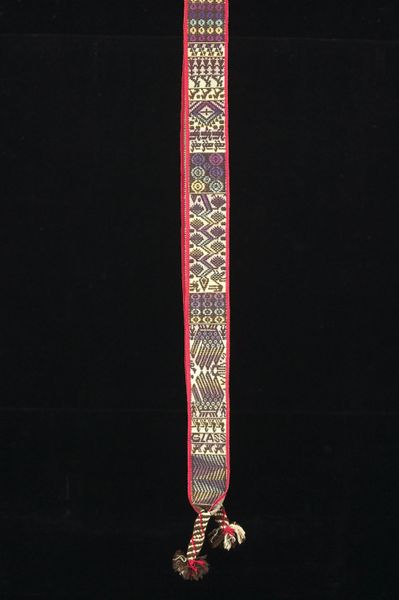
fibre-art, weaving, textile
#
fibre-art
#
sculpture
#
weaving
#
textile
#
figuration
#
geometric
#
indigenous-americas
Dimensions: 60.3 × 14 cm (23 3/4 × 5 1/2 in.)
Copyright: Public Domain
Editor: So, this is "Fragment," a textile piece from the Lambayeque culture, possibly dating from 1000 to 1476, made of wool. The geometric patterns are intriguing, almost like a code. What do you see in this piece, beyond the visual patterns? Curator: I see a powerful intersection of culture, belief, and artistic expression. These textiles weren't mere decoration; they were integral to social and religious life. The repeated motifs, particularly the figures with bird-like attributes, suggest a deep connection to ancestor worship and the natural world. What strikes me is the way geometric abstraction serves as a visual language. Can you see how the fragmented nature of the piece could be speaking to the disruption and loss experienced by Indigenous communities throughout history? Editor: That's a powerful point. I was so focused on the pattern, I hadn't considered the potential impact of colonial violence and cultural erasure. Curator: Exactly. Consider the power dynamics at play – who created this textile, for what purpose, and how has its meaning shifted through time and displacement? These textiles acted as powerful markers of identity and status. How might understanding these pieces help us to challenge dominant narratives? Editor: It reframes my understanding completely. Instead of just appreciating it aesthetically, I'm now thinking about the socio-political context in which it was created and the history it carries. Curator: Precisely. It is a conversation between then and now. Editor: Thanks so much! I am glad to think of how weaving history makes it more complete. Curator: It was a pleasure exchanging insights. Keep exploring!
Comments
No comments
Be the first to comment and join the conversation on the ultimate creative platform.
